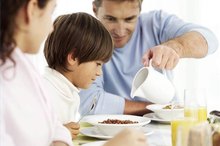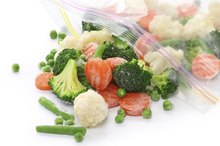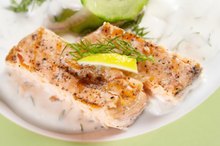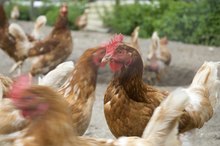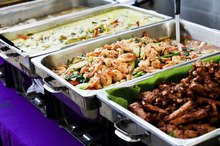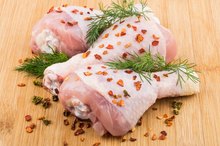What does fact checked mean?
At Healthfully, we strive to deliver objective content that is accurate and up-to-date. Our team periodically reviews articles in order to ensure content quality. The sources cited below consist of evidence from peer-reviewed journals, prominent medical organizations, academic associations, and government data.
The information contained on this site is for informational purposes only, and should not be used as a substitute for the advice of a professional health care provider. Please check with the appropriate physician regarding health questions and concerns. Although we strive to deliver accurate and up-to-date information, no guarantee to that effect is made.
The Effects of Temperature on E. Coli
E. coli is a type of bacteria commonly found in the intestinal tracts of large mammals. Humans naturally harbor certain strains of E. coli in their intestines, but other strains can cause serious gastrointestinal illness. Cases of food poisoning are often linked to E. coli contamination from cattle and can infect beef and unpasteurized milk. It can also be spread to vegetables and fruits through manure compost. One of the reasons E. coli is such a common source of human illness is its resistance to heat and cold.
Freezing
Freezing foods infected with E. coli stops the growth of the bacterial population for as long as the food remains frozen. At temperatures of 0°C (32°F) E. coli bacteria are unable to divide, keeping the population stable. At temperatures of -18°C (0°F) E. coli begins to die. Storing food at this temperature for a week will reduce the population to about 10 to 30 percent original levels. After two weeks at this temperature, survivability drops to about 1 percent. However, the infection can reassert itself at higher temperatures, and freezing should not be viewed as a method of sterilization.
- Freezing foods infected with E. coli stops the growth of the bacterial population for as long as the food remains frozen.
- At temperatures of 0°C (32°F) E. coli bacteria are unable to divide, keeping the population stable.
Refrigeration
What Are the Effects of Food Contamination?
Learn More
Refrigeration drastically slows, but does not completely stop, the growth of E. coli. Infected foods held between 4°C (39°F) and 7°C (44°F) show minimal growth. However, E. coli is not significantly harmed by extended exposure to these temperatures. It can survive indefinitely at any temperature above freezing. Refrigeration is an important step in slowing the spread of E. coli, but it will not affect an established population.
- Refrigeration drastically slows, but does not completely stop, the growth of E. coli.
- Refrigeration is an important step in slowing the spread of E. coli, but it will not affect an established population.
Room Temperature
E. coli grows most quickly at temperatures above 10°C (50°F). When infected food is moved from a refrigerator to a room temperature environment, E. coli growth begins almost immediately 2. Once food has been kept at room temperature for six hours, growth rates have fully recovered from any effects of freezing and refrigeration 2. Food that may contain E. coli should not be kept at room temperature for more than one hour before cooking 2.
Heating
Botulism Risk of Canned Beans
Learn More
E. coli is killed by temperatures of 70°C (160°F). Food heated to this temperature should not contain high enough levels of E. coli to cause illness in humans. It is very important that every part of the food is heated to at least 70°C. While the outside of a hamburger may easily reach these temperatures when it is cooked, the center of a rare hamburger is likely to be much cooler, and capable of harboring E. coli infection. Even properly cooked food should not be stored at room temperature for longer than six hours, as there may still be enough surviving bacteria to establish a population capable of infection.
- E. coli is killed by temperatures of 70°C (160°F).
- Even properly cooked food should not be stored at room temperature for longer than six hours, as there may still be enough surviving bacteria to establish a population capable of infection.
Related Articles
References
- "Journal of Food Science"; The Effects of Freezing on the Survival of Salmonella and E. Coli in Pacific Oysters; R. Digirolamo, et al.; January 1970
- Food Production Daily: Temperature Changes and the Threat of E. coli Growth
- Centers for Disease Control and Prevention. Symptoms: E.coli. Updated November 20, 2017.
- National Kidney Foundation. Hemolytic Uremic Syndrome. 2016.
- Minnesota Department of Health. E. coli O157:H7 and HUS Fact Sheet. Updated May 2009.
- Centers for Disease Control and Prevention. Prevention. Updated September 20, 2017.
- KidsHealth.org, Diarrhea.
- US Centers for Disease Control and Prevention. Questions and Answers: E.coli.
